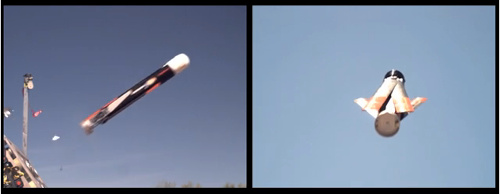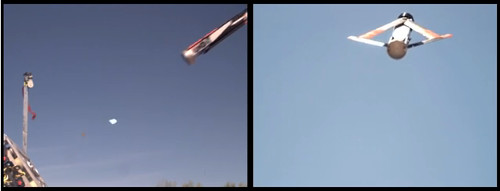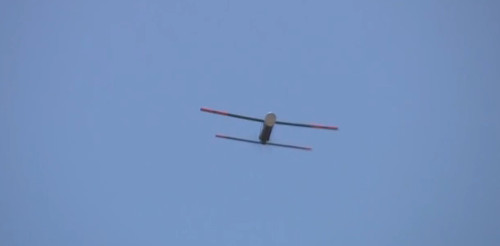 |
| April 28, 2015 | Volume 11 Issue 16 |
Designfax weekly eMagazine
Archives
Partners
Manufacturing Center
Product Spotlight
Modern Applications News
Metalworking Ideas For
Today's Job Shops
Tooling and Production
Strategies for large
metalworking plants
Shot out of tubes, new Navy swarming UAVs fly into the future
By David Smalley, Office of Naval Research
A new era in autonomy and unmanned systems for naval operations is on the horizon. Officials at the Office of Naval Research (ONR) announced April 14 a series of recent technology demonstrations of swarming unmanned aerial vehicles (UAVs) -- part of the LOw-Cost UAV Swarming Technology (LOCUST) program.
LOCUST can launch swarming UAVs to try to autonomously overwhelm an adversary. The deployment of UAV swarms aims to provide Sailors and Marines a decisive tactical advantage.

The LOw-Cost Unmanned aerial vehicle Swarming Technology (LOCUST) is a prototype tube-launched UAV that features foldable wings and stabilizers.


"The recent demonstrations are an important step on the way to the 2016 ship-based demonstration of 30 rapidly launched autonomous, swarming UAVs," said ONR Program Manager Lee Mastroianni.
The LOCUST program includes a tube-based launcher that can send UAVs into the air in rapid succession.
The breakthrough technology then utilizes information sharing between the UAVs, enabling autonomous collaborative behavior in either defensive or offensive missions.
Since the launcher and the UAVs themselves have a small footprint, the technology enables swarms of compact UAVs to take off from ships, tactical vehicles, aircraft, or other unmanned platforms.
The ONR demonstrations, which took place over the last month in multiple locations, included the launch of Coyote UAVs capable of carrying varying payloads for different missions.
Another technology demonstration of nine UAVs accomplished completely autonomous UAV synchronization and formation flight.
Video: According to UAV Global, "The 3-ft-long electrically driven Coyote UAV is designed to be launched from the sonobuoy tube of a U.S. Navy P-3C Orion or a helicopter, such as the SH-60, to provide 90 minutes ISR collection. At 12 to 14 lb, the Coyote UAV has a cruising airspeed of 60 knots and dash airspeed of 85 knots being able to be launched and operate at altitudes up to 20,000 ft. ... Its flight is controlled via line-of-sight radio link (VHF or UHF) as far as 20 miles from the P-3 or helicopter controlling it." It has a wingspan of about 5 ft.
ONR officials note that while the LOCUST autonomy is cutting-edge compared to remote-controlled UAVs, there will always be a human monitoring the mission, able to step in and take control as desired.
"This level of autonomous swarming flight has never been done before," said Mastroianni. "UAVs that are expendable and reconfigurable will free manned aircraft and traditional weapon systems to do more and essentially multiply combat power at decreased risk to the warfighter."
UAVs reduce hazards and free personnel to perform more complex tasks, as well as require fewer people to do multiple missions.
Lowering costs is a major benefit of UAVs, as well. Even hundreds of small autonomous UAVs cost less than a single tactical aircraft -- and, officials note, having this capability will force adversaries to focus on UAV swarm response.
Published April 2015
Rate this article
View our terms of use and privacy policy
